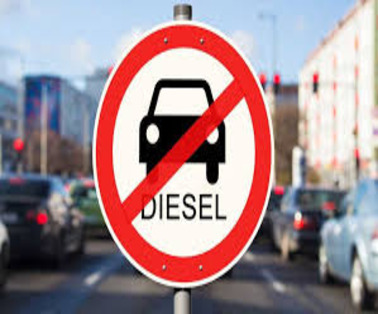The National Clean Air Programme (NCAP), launched to reduce air pollution in India’s most polluted cities, has fallen short of its 2024 goals. A recent study reveals that despite substantial funding, most Indian cities have failed to meet the clean air benchmarks for PM2.5 and PM10 reductions.
Key Points
- The National Clean Action Programme (NCAP) was launched in 2019 with a target of reducing 20 to 30 per cent particulate pollution by 2024
- Which was then further increased to 40 per cent by 2026. However, most major cities in the country are way behind the 2024 benchmark, according to a recently released study.
- The cities fell short despite about Rs 9,650 crore being pumped into controlling air pollution across 131 non-attainment cities so far, out of which nearly 60 per cent — Rs 5,835 crore — being utilised by the cities.
- Non-attainment cities are designated as such if they consistently fail to meet the National Ambient Air Quality Standards (NAAQS) for fine particulate matter (PM10 that has a diameter of 10 microns or less) or nitrogen dioxide over a five-year period.
Study Findings on Clean Air
- Among 49 cities with consistent PM2.5 data over five years, only 27 cities showed a decline in PM2.5 levels, while merely four cities met or surpassed the targeted decline as per National Clean Air Campaign (NCAP)
- While some cities like Varanasi, Agra, and Jodhpur exhibited significant reductions in PM2.5 levels, others, including Delhi, reported marginal declines (only 5.9%) or even increased pollution loads.
- Varanasi showed the most substantial reduction with a 72%average decrease in PM2.5 levels and a 69% reduction in PM10 levels from 2019 to 2023.
- The Indo-Gangetic Plain (IGP) remains highly vulnerable to elevated particulate matter concentrations, hosting around 18 of the top 20 most polluted cities for PM2.5.
- Only Guwahati and Rourkela, outside the IGP, were among the 20 most polluted cities for PM 2.5.
National Clean Air Program
- It was launched by the Ministry of Environment, Forests and Climate Change (MoEFCC)
- It is the first-ever effort in the country to frame a national framework for air quality management with a time-bound reduction target.
- It covers 131 non-attainment cities which were identified by the Central Pollution Control Board (CPCB).
- PRANA ( Portal for Regulation of Air-pollution in Non-Attainment cities), is a portal for monitoring of implementation of NCAP.
National Clean Air Programme (NCAP) Features
- The program is backed by 15th Finance Commission.
- Cities are required to take measures to improve air quality inter-alia include solid waste management, control of pollution from biomass burning and air pollution from construction & demolition activities.
- The program is considered as a scheme rather than legal binding document hence there are no specified penal actions against cities that fail to meet the targets outlined in the program.
- NCAP is a mid-term, five-year action plan launched in 2019.
- However, international experiences and national studies indicate that significant outcome in terms of air pollution initiatives are visible only in the long-term, and hence the programme may be further extended to 20–25 years in the long-term after a mid-term review of the outcomes.
National Clean Air Programme (NCAP) Objectives
- To ensure stringent implementation of mitigation measures for prevention, control and abatement of air pollution.
- To augment and evolve effective and proficient ambient air quality monitoring network across the country for ensuring a comprehensive and reliable database.
- To augment public awareness and capacity-building measures encompassing data dissemination and public outreach programmes for inclusive public participation and for ensuring trained manpower and infrastructure on air pollution
Additional Government Initiatives Supporting Clean Air
- Commission for Air Quality Management: The Commission has been set up for Air Quality Management in the National Capital Region and Adjoining Areas for better coordination, research, identification, and resolution of problems surrounding the air quality index and for matters connected therewith or incidental thereto.
- Graded Response Action Plan (GRAP): It is a set of emergency measures that kick in to prevent further deterioration of air quality once it reaches a certain threshold in the Delhi-NCR region.
- The Pradhan Mantri Ujjwala Yojana Household LPG program and other schemes have helped to dramatically expand access to clean energy, especially for rural households.
- Leapfrogging from BS-IV to BS-VI fuel standards since 1st April, 2018 in NCT of Delhi and from 1st April, 2020 for the rest of the country.
- Introduction of BS VI compliant vehicles across the country since April, 2020.
- Department of Heavy Industry is providing subsidy on e-vehicles under Faster Adoption and Manufacture of (Hybrid &) Electric Vehicles in India (FAME -II India) scheme.
- Sustainable Alternative Towards Affordable Transportation (SATAT) has been launched as an initiative to set up Compressed Bio-Gas (CBG) production plants and make CBG available in the market for use in automotive fuels.
- Ban on use of pet coke and furnace oil as fuel in NCR States since October 24, 2017 and ban on use of imported pet coke in the country since July 26, 2018, with exception for use in permitted processes.
Challenges and Way Forward
While India’s push for clean air is visible through initiatives like NCAP and CAQM, enforcement remains weak due to the non-binding nature of many programs. Experts suggest extending NCAP into a long-term strategy with stronger legal backing and improved data monitoring to achieve sustainable clean air outcomes.
To Download Monthly Current Affairs PDF Click here
Click here to get a free demo
Discover all about CLAT Exam



